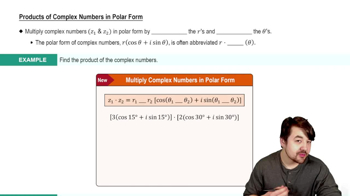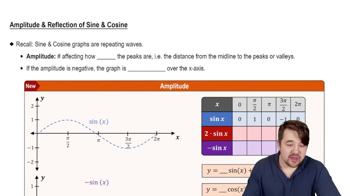Textbook Question
Through how many radians does the minute hand on a clock rotate in (a) 12 hr and (b) 3 hr?
772
views
 Verified step by step guidance
Verified step by step guidance Verified video answer for a similar problem:
Verified video answer for a similar problem:



 3:35m
3:35mMaster Intro to Complementary & Supplementary Angles with a bite sized video explanation from Patrick
Start learning